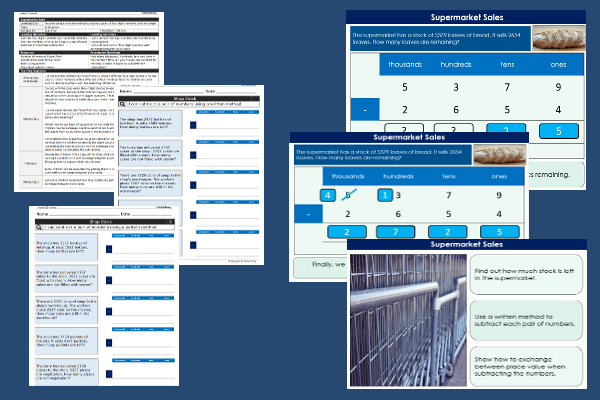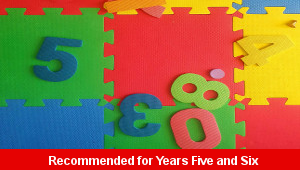Lesson Three – Supermarket Sales

This maths teaching pack for Key Stage Two gets the children to practise using a written columnar method to subtract pairs of four digit numbers with exchange between place value.
The class can model how to solve number problems to show the stock left in a supermarket’s warehouse following sales using the decomposition method of subtraction calculation.
Download this teaching pack including a lesson plan, classroom activities and an interactive presentation to teach the children to practise using a written columnar method to subtract pairs of four digit numbers with exchange between place value
Activities in this teaching pack include a set of differentiated worksheets to subtract pairs of four digit numbers with exchange between place value to show the amount of stock left in supermarket’s warehouse following sales. The class can use the formal method of decomposition when subtracting the pairs of numbers.
The interactive presentation gets the children to identify and describe the calculation steps that can be used when solving a number problem using a formal method of subtraction with exchange between place value.
This lesson is part of a maths scheme of work to get the children to identify and model how to solve contextual problems using formal written calculations for addition and subtraction including exchange between place value. There are teaching activities for shared learning, differentiated worksheets to support independent learning and interactive presentations to introduce concepts and key skills.
-

Digit Combinations
Practise building and comparing a range of numbers by combining and matching sets of digits with different number values
-

Letter Strings Words Sums
Learn the meanings and practise spelling words with common letter strings to work with when composing example sentences on different topics and themes
-

Town Flag
Investigate and practise how to create different graphic shapes that can be utilised when producing a flag representing the local community
-

Three Digit Values
Investigate and compare the place value of the matching sets of digits in numbers to one thousand to indicate their hundreds, tens and ones values
